We’ve been helping to nurture nature at RAF Cranwell and RAF Barkston Heath.
Earlier this year, Curlew Eggs were collected from airfields in the East of England; some of which were from RAF Cranwell and RAF Barkston Heath. The eggs were then relocated to the Pensthorpe Conservation Trust (PCT) to be part of their Curlew programme - some of the birds from RAF Cranwell and Barkston Heath were fitted with trackers which the bird wears on its back like a small backpack. We are therefore able to see their movements and staff at Pensthorpe thought it would be nice to give the Curlews names - we opened this up to our wider community and asked local students to name them!

It has been fascinating to see their movements - but how far did they travel and what are their names? All four birds were released from Sandringham between 58 and 72 days old.
Cranwell Curlews formerly known as 6Y and 6X are now called Potato (named by a pupil at St George’s Academy - because the eggs look like potatoes) and Nemo who proved to be a reluctant traveller compared to Potato! Potato travelled to Ireland, whilst Nemo has settled in Snettisham.

The Barkston birds - formerly 8L and 8E are now called Beaky McBeakface - suggested by a teacher at St Georges Academy and voted for by RAF Cranwell personnel and Billy Basin - named by the children and staff at RAFA Kidz, Billy was chosen because Curlews don’t have a beak they have bills and Basin because the children identified that Curlew habitats are near water! Beaky’s current location is near the mouth of the Great Ouse entering the Wash and Billy is currently on the coast near Frieston Shore.
Thank you to everyone who helped name the Curlews!
For more information - please go to: Curlew - Pensthorpe







